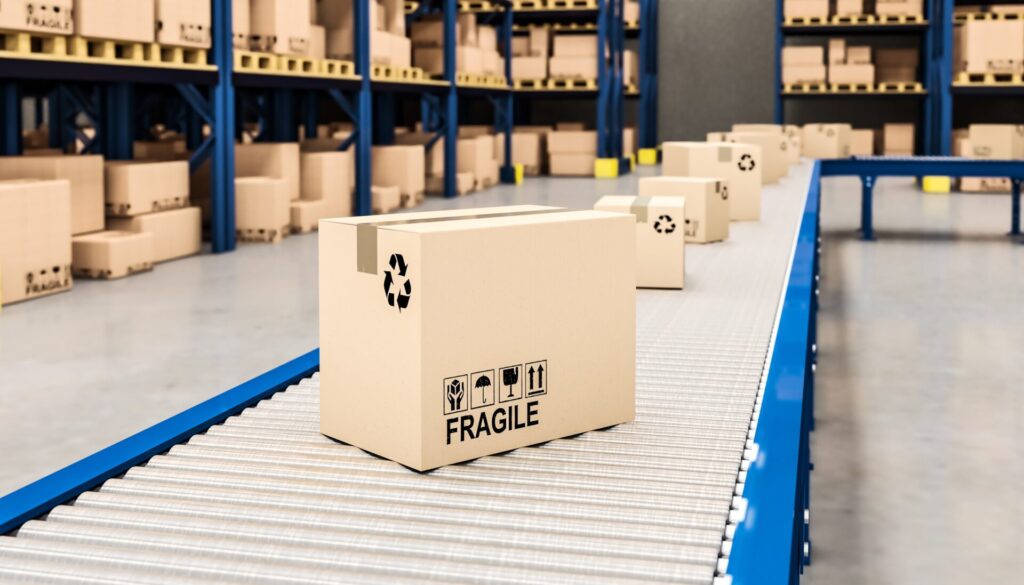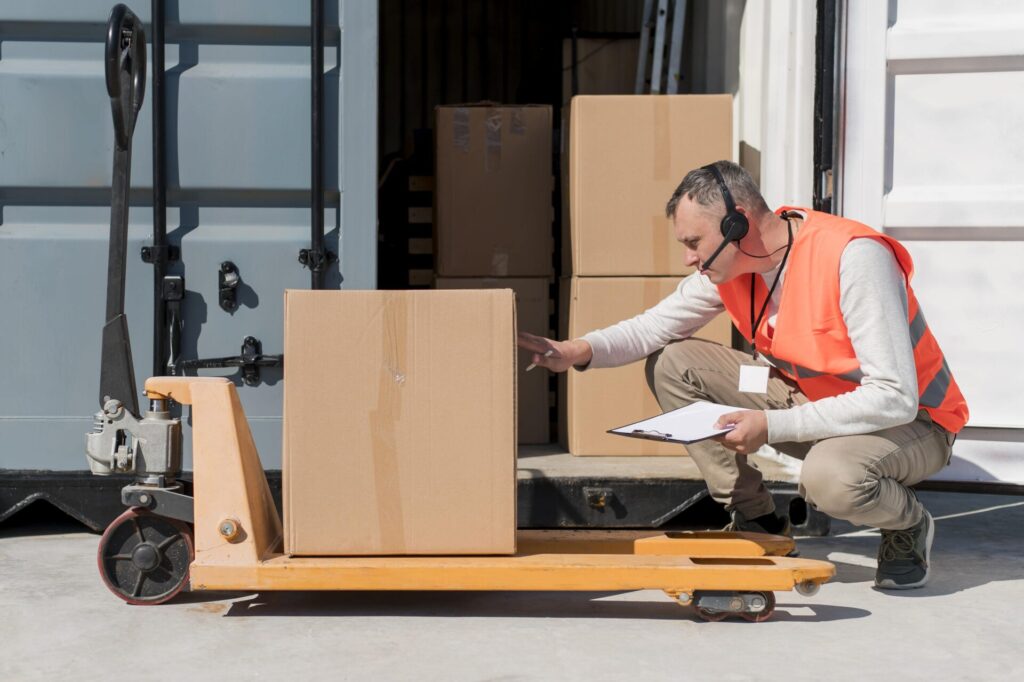
The Role of Freight Class in LTL Shipping
For businesses reliant on Less Than Truckload (LTL) freight, freight class is a pillar of accurate rating and smooth shipping. Yet it’s a concept that often confuses or frustrates shippers—especially if they frequently face reclassification fees or unexpected surcharges. In simplest terms, freight class ensures carriers are fairly compensated for cargo that’s lightweight but bulky or delicate, balancing the cost of moving diverse goods on a single trailer.
This article unpacks why freight class so heavily influences LTL shipping costs, how classification is assigned, and the consequences of inaccuracies. If you’re shipping partial loads or encountering repeated billing adjustments, understanding freight class fundamentals and preventing misclassifications can shield you from inflated invoices or damaged carrier relationships.
Introduction
Why Freight Class Matters for Partial Loads
Unlike Full Truckload (FTL), which dedicates an entire trailer to a single shipment, LTL merges multiple loads from different shippers on one truck. Because these loads vary in weight, size, and fragility, carriers use freight class to standardize rates. Essentially, a low-density or fragile item takes up more cubic space or extra care, so it’s assigned a higher freight class, boosting the rate. Understanding this correlation is essential to controlling LTL costs.
Common Confusion Among New LTL Shippers
It’s not rare for novices to scratch their heads over how carriers determine final invoices. Why are two identically weighed shipments billed differently? The answer often lies in commodity classification—the assigned freight class or NMFC code. Failing to understand how these codes shape your rate can result in reclassification or reweigh fees. That’s why the first step in mastering LTL shipping is to nail your freight class.
Understanding Freight Class Basics
NMFC and the Classification System
The National Motor Freight Traffic Association (NMFTA) maintains the National Motor Freight Classification (NMFC) system, which groups commodities by shared transport characteristics. Each commodity or product type is assigned a unique NMFC number. This number cross-references to a freight class. Classes range from 50 to 500, with lower classes signifying denser, easier-to-handle goods (like bricks, Class 50) and higher classes denoting lighter, bulkier, or more fragile items (like pillows, Class 200 or above).
Range of Classes (50 to 500)
For instance:
- Class 50–70: Heavy, dense freight, such as steel or automotive parts.
- Class 85–125: Mid-range densities, like home appliances or packaged consumer goods.
- Class 150–200: Bulkier items that are less dense, such as furniture or large plastic housings.
- Class 250–500: Extremely light, voluminous, or delicate shipments, e.g., airbags, pillows, or high-value electronics requiring special handling.
Four Core Factors Determining Freight Class
Density: Weight vs. Cubic Volume
Density equals weight (in pounds) divided by volume (cubic feet). Low density—like foam or large plush toys—pushes the class up, because it uses trailer space inefficiently. Meanwhile, extremely dense shipments might fall into lower classes, sometimes benefiting from cost advantages since they’re cheaper to move pound-for-pound.
Stowability: Irregular Shapes and Hazmat
Some products can’t be stacked or nestled easily (like cylindrical containers or oddly shaped displays). Others are hazardous, posing stowability or regulatory complications. Since these complexities limit how the freight is loaded, carriers assign higher freight classes to reflect the extra space or precautions required.
Handling: Fragile, Oversized, or Special Requirements
If your freight needs special handling—like temperature control, blanket-wrap, or mechanical assistance—carriers may apply higher classes. This accounts for additional labor or specialized equipment. Handling complexity also includes items requiring careful separation from other cargo to avoid contamination or damage.
Liability: Value, Theft Risk, and Ease of Damage
Carriers assess liability if an item is easily broken, extremely valuable, or prone to theft. A high-value or delicate cargo (like glass or electronics) that carriers worry about incurring claims for is often placed in a higher class. That way, the rate offsets potential insurance or payout risks.

How Freight Class Influences LTL Rates
Higher Class = Higher Cost
Since freight class translates to how difficult or space-consuming it is to haul, a higher class triggers a higher base rate per hundredweight (cwt). Two shipments of equal weight but different classes may have noticeably different shipping costs if one item has far lower density or needs specialized handling.
Avoiding Overpaying or Underpaying
If you misclassify downward—listing Class 70 when it should be Class 125—you risk a reclassification and fee once the carrier inspects your freight. Conversely, classing too high pays more than necessary. An accurate classification from the get-go ensures stable quoting and avoids last-minute surcharges.
The NMFC Code: Linking Freight Class to Item Types
Finding the Right NMFC Code for Specific Products
Each product type (like “metal parts,” “ceramic tiles,” or “office chairs”) is assigned an NMFC code in the NMFC directory. Shippers must pick the correct code that best describes their commodity. For complex or varied items, consult carriers, online classification tools, or directly reach out to the NMFTA. Proper code assignment means your Bill of Lading (BOL) matches the item’s known classification.
Preventing Reclassification with Accurate Descriptions
Some items fall between categories or come with sub-rules about packaging (like if furniture is disassembled vs. assembled). Providing thorough descriptions—dimensions, weight, nature of material—helps carriers trust your declared class. If uncertain, a phone conversation with the carrier’s classification department can clarify your item’s code, sparing reweigh or reclassification.
Calculating Density for Freight Class
The Density Formula and Examples
Density (pounds per cubic foot) =
Density (lbs/ft^3) = Weight (lbs) / ((Length (in) * Width (in) * Height (in)) / 1728)
For instance, a pallet that weighs 300 lbs and measures 48″ x 40″ x 50″ equates to 48 x 40 x 50 = 96,000 cubic inches. Convert to cubic feet by dividing by 1,728: roughly 55.56 cubic feet. Then 300 lbs / 55.56 cu ft ≈ 5.4 lb/ft³. Consulting the NMFC table, if 5.4 falls into a particular density bracket, it yields a freight class (like Class 125 or 150, depending on specific commodity factors).
Rounding Up Dimensions to the Nearest Inch
Shippers often slip by understating an inch or two. Carriers re-measure during transit if they suspect dimension mismatches. Always measure to the furthest protrusions and round up, ensuring the declared dimensions match reality.
Common Mistakes and Pitfalls
Understating Weight or Dimensions
Guesstimating or forgetting to include packaging (pallet, protective foam, etc.) is a frequent oversight. If the realized scale weight or measured cubic dimension surpasses your declared figures, carriers enforce reweigh or reclass fees—sometimes significant. Over time, these repeated fees cut into profit margins.
Mismatching Commodity Descriptions
Say you label your goods as “machine parts” (Class 70), while they’re actually “machinery, assembled” (Class 100). Even an honest mistake can end up in carriers imposing a corrected class. Carriers stay vigilant for mismatches that affect their revenue from potential space usage or risk.

Working with Carriers and Brokers
Double-Checking Class Before Booking
Whether you handle shipping in-house or through a 3PL broker, verifying your commodity classification is crucial. Provide carriers or brokers with precise details—weight, size, nature of goods—so they quote accurately. If you’re shipping something new or unusual, confirm correct class early.
Resolving Reclass Disputes and Adjustments
If you strongly believe the carrier wrongly reclassified your item, gather evidence (photos, item specs, packaging data) to dispute it. Some carriers are open to adjusting if you can prove your original classification was correct. If disputes persist, you can escalate to the NMFTA or a third-party arbitrator, though that’s a rarer step.
Benefits of Getting Class Right
Fewer Surprises on Final Invoices
Consistent, accurate classification means your original quote matches your final invoice, leading to stable shipping budgets. Fewer reweigh or reclassification charges save time rectifying bills or appealing fees. Ultimately, that reliability cements better relationships with carriers, who appreciate shippers providing correct data.
Faster Transit and Fewer Delays
Misclassed or mislabeled freight may face hold-ups at cross-docks while staff hunts for clarifications or corrected papers. By inputting the right NMFC code and class from the onset, shipments flow more smoothly through each terminal, potentially shaving a day or more off final delivery times.
Case Study: Avoiding Reclass Fees
A Furniture Shipper’s Experience with Classing
A mid-sized furniture maker often shipped partially assembled items but mistakenly used a class for fully assembled pieces. Carriers frequently found the boxes were oversized, pushing them into a higher class. The result? Monthly reclass charges that inflated shipping cost by 15–20%. After re-checking product density and recalculating packaging dimensions, the company corrected BOL data and ended up saving thousands in reclass fees annually.
Dramatic Cost Savings by Correct Classification
By ensuring each SKUs correct NMFC code—particularly distinguishing packaged vs. unassembled forms—the furniture maker standardized its shipping profile. The improved accuracy meant carriers developed trust, facilitating more stable rates and fewer admin headaches.
Tips for Ongoing Accuracy
Using Dimensioners and TMS Integrations
Adopting automated dimensioning tools—like overhead laser scanners in warehouses—removes guesswork. For frequent shipments, feeding these dimension stats into a TMS ensures each Bill of Lading pulls correct data, eliminating manual typing errors or rounding. This approach keeps your entire shipping process consistent and verifiable.
Periodic Audits of Product Lines
If you redesign packaging or switch suppliers, item dimensions may evolve. Routinely re-audit your product dimensions and packaging, updating your classification references to match. Even a small difference in box height can shift an item from Class 125 to 150, affecting cost significantly.
Conclusion
Freight class is a cornerstone of LTL shipping, directly influencing how carriers rate your shipments and what you eventually pay. By mastering the classification system—especially the interplay of density, stowability, handling, and liability—and correctly applying NMFC codes, you can sidestep reclassification fees, ensure smooth cross-docking, and maintain accurate shipping budgets.
For your everyday operations, a few best practices go a long way: thoroughly measure shipments, keep an updated library of NMFC codes, and remain open to packaging improvements that compress dimensions and curb your freight class. An efficient approach here not only saves money but also fosters trust with carriers, leading to fewer disputes and more fluid LTL shipments overall.
How useful was this post?
Click on a star to rate it!
Average rating 0 / 5. Vote count: 0
No votes so far! Be the first to rate this post.



